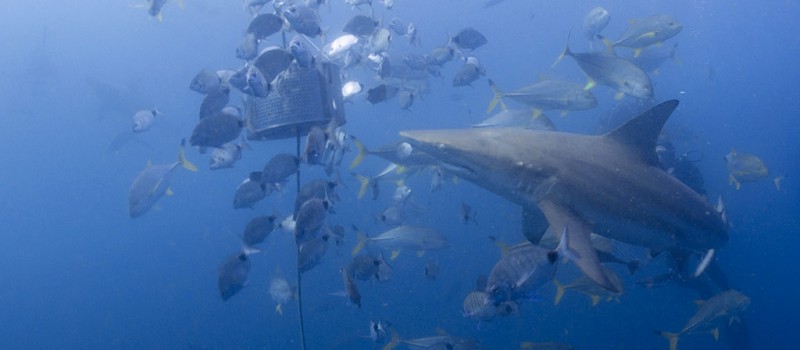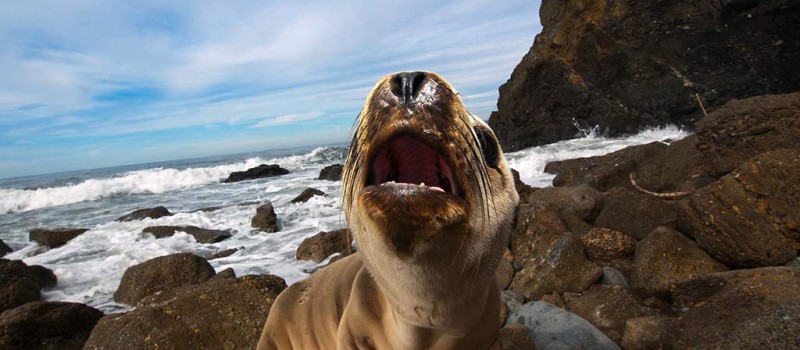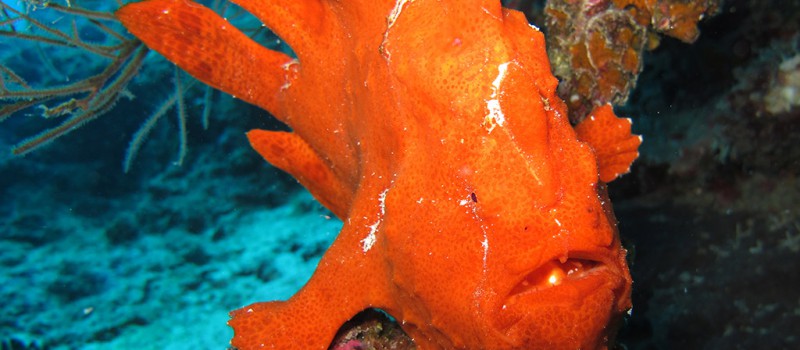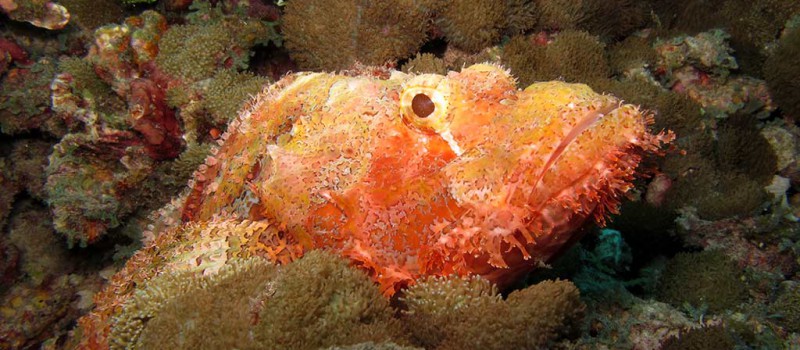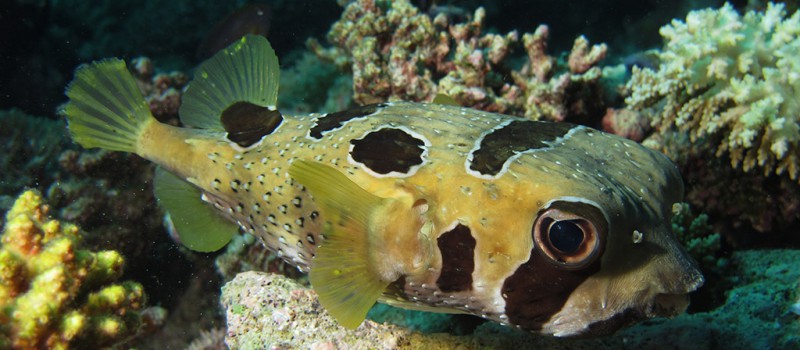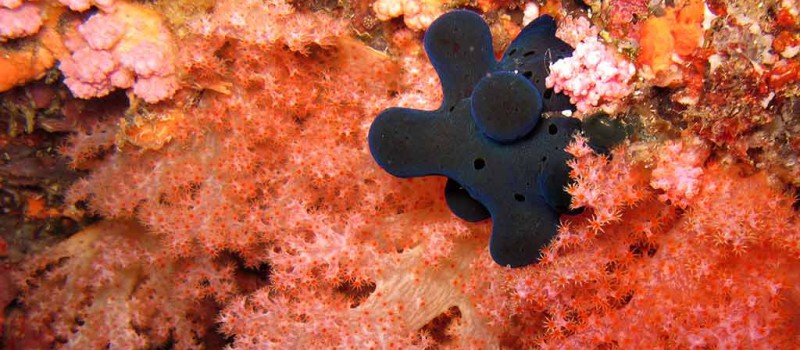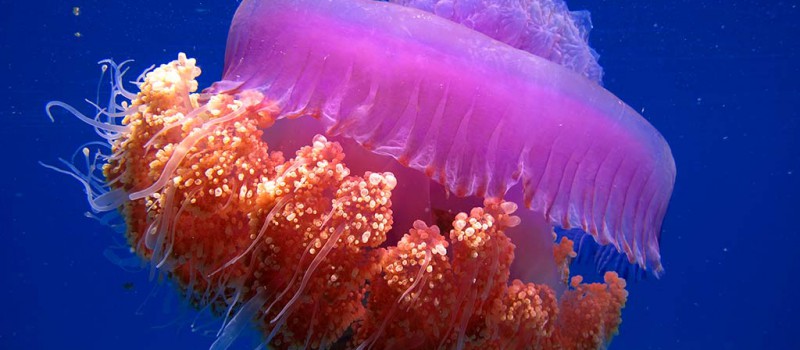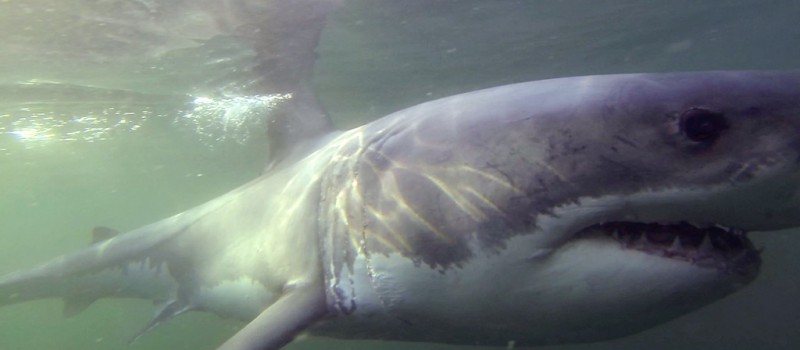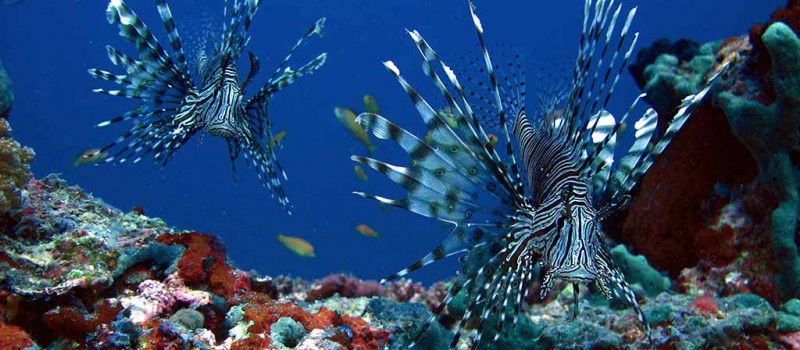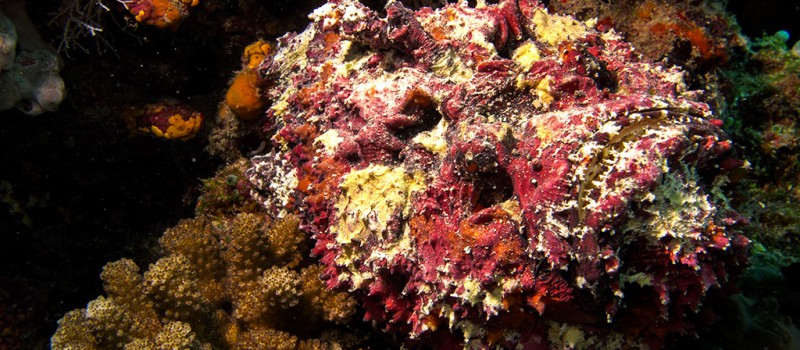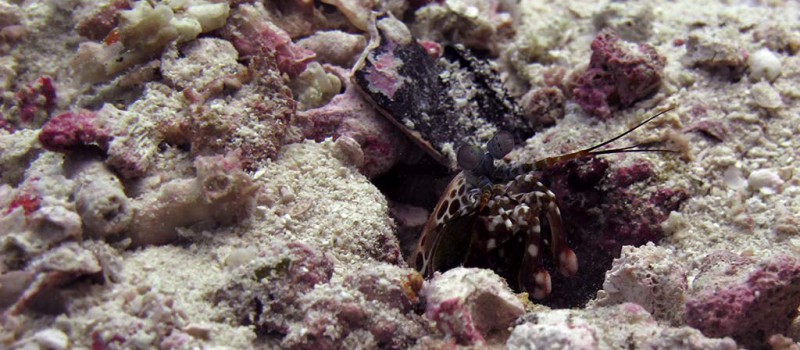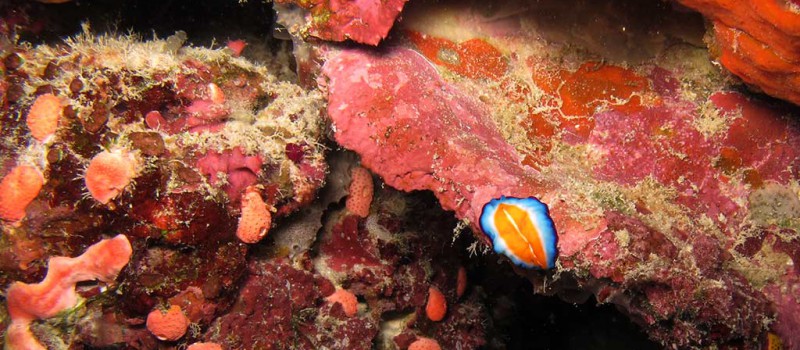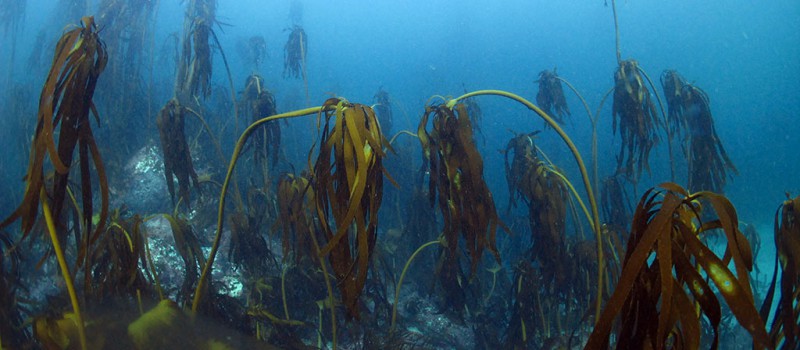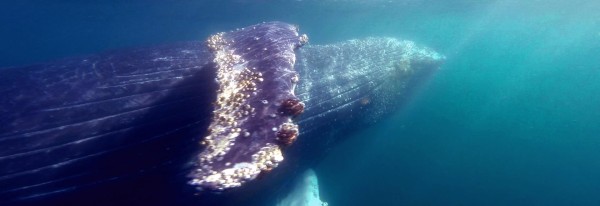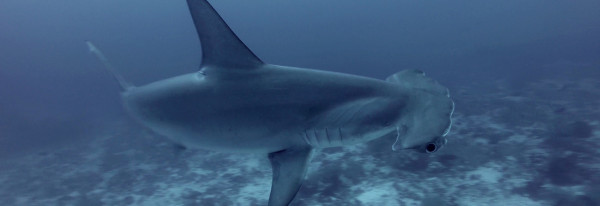There is something about the human psyche that we simply must accept; people like being scared. The particulars certainly vary, from zombie apocalypses to roller coasters to man-eating beasts; both the fantasized and the real. It seems likely that this is the inspiration for so many of the lists you can find now-a-days telling you of the deadliest animals out there and how they just might kill you. Nevertheless, when you are in the water this information is not just for entertainment, it’s instead extremely important. This is because some of the most dangerous sea creatures are not that scary looking thereby making it easy for divers to underestimate the risks.
In fact, many people set in their minds the idea of sea creatures matching up with collective imagination monstrous portraits but often these animals don’t represent the biggest threat.
There are plenty of fish in the sea… so watch out!
You should also keep in mind that in 2010, the Census of Marine Life was able to describe over 250,000 marine species and expected that at least 750,000 more species remain undescribed. With that said, there are probably more than just a few dangerous creatures you haven’t heard about. In addition, “the most dangerous” is such an intriguing classification it also serves as a platform for discussing lesser known sea creatures and current conservation issues. So, not all of the creatures on this list may soon kill someone anytime, nevertheless knowing what they are capable of and imagining what they could do is quite fearsome.
The roots of animal danger
With so much sea life roaming about, the daunting task of knowing all the “dangerous ones” can feel like someone just asked you to name off all your Facebook friends. Rather than putting your memory to the ultimate test, the best approach to recognising hazardous animals is understanding why they develop deadly strategies in the first place. Building a basic knowledge of animals can help you deduce the potential threat when you are unfamiliar with a species. For many of the creatures you will encounter on a dive, the root of danger is often food acquisition, self-defence or both. Though there are certainly some deadly toxins out there that you should watch out for, many animals try to use this arsenal sparingly. What this means is that the biggest danger is in the behaviour of an animal.
Why so grumpy?
A vague understanding of nature can lead you to antagonise or harass marine life without realising what you’ve done until that animal snaps. The logic may seem straightforward, but these dangerous roots can express themselves in some not-so-obvious ways. For instance, with animals that are dangerous because of food, the issue may not be that you’re on the menu. The common problem with food is that animals just don’t want to share, so the real issue is competition. You should always be wary of animals when there is food around because competition encourages aggressive behaviour. Such may have been the case for Latin pop singer, Shakira. During a visit to South Africa, Shakira claims she was charged by a sea lion. She recounts that it leapt out of the water and onto the nearby rocks where she sat. Shakira believes the sea lion may have confused her shiny cell phone for food. At the time of the incident, she was pointing her phone directly at the animal so she could take photos.
Adorable sea lions and smiling dolphins still have teeth!
Shakira isn’t the only person to encounter the bad side of cute and cuddly marine life. When it comes to sea lions and dolphins, dangerous encounters can quickly ignite due to their competitive natures, not just for food, but other resources as well. For swimmers in San Francisco Bay, a male sea lion that bit at least 14 swimmers may have been defending his harem of females. Off the Irish coast, beloved bottlenose dolphin, Dusty, who even boasts a Facebook page, has become so aggressive that warning signs have been erected all along the beaches. The root of this local dolphin’s aggression is unclear. Some experts speculate that Dusty is trying to rough house with swimmers. Playing is often how young animals practice competitive behaviours which they later use seriously as adults. Other reports, however, speculate that Dusty’s once docile nature has been abused by people. If this was true, then Dusty’s aggressive behaviour could be out of self-defence rather than competition. With this story in mind, you should always be careful of animals that have been subject to repeated human interactions. Whether the intentions of people are good or bad, they can still leave negative and lasting impressions on wildlife. Consequently, when diving in heavily populated waters, these animals may have altered their natural behaviour resulting in heightened displays of aggression.
Know the signs before an animal attacks
So what does aggression look like? Displays of aggression are an animal’s attempt at communication before having to act. These signs can take many forms and vary from species to species. Some general signs of aggression include:
- Territorial display: animals may hold their ground but move slightly so they continue to face you
- False charges: animals may dart towards you but not actually attack, at first this may seem to you like playful behaviour
- Flaunting their danger: animals may expose their defensive appendages such as baring teeth, holding up claws or lifting up spines
Aggression with colours
Even when you’re doing everything right, something can still go wrong. An animal’s aggressive behaviour is your most obvious signal to back-off. Consequently, it’s easy for anyone to assume that the opposite means that whatever you are doing is “okay”. However, some animals let their colours do all the talking. Electric yellows, striking reds, and curious splashes of pinks against purples are just some of the colour combinations found in the world’s oceans. These fanciful arrangements often belong to the most tranquil species and can be quite inviting to a passing diver. As a result, the real message can be confusing. To you, these animals may seem like they have given little to no indication before they do harm. Yet in fact, bright coloration is nature’s silent warning. These animals are not forewarning you of their bad tempers, rather, conspicuous animals are telling you they are toxic. Classic warning colours include:
- Red
- Yellow
- Orange
- Contrasts (such as black and white stripes)
Poisonous versus venomous: do you know the difference?
Many people assume poisonous and venomous are interchangeable terms but that’s not quite right. Both terms refer to animals that contain toxin. However, knowing if you’re about to handle a venomous animal versus a poisonous one can mean all the difference with what happens next in your encounter. For instance venomous animals deliver their toxin through an injection, with these creatures you want to be vigilant of all of their fangs and spines. Often times, venomous creatures will try to display their dangerous attributes before using them.
To chill or not to chill? That is the warning colour question
Venom can be tricky to recognise if the species is mild mannered because unintentional jabs from a small spine can be just as common as purposeful blows. Usually, this sort of relaxed temperament is more common in poisonous species. This is because poisonous creatures want the message “to stay away” to be very clear so they use warning colours to make a loud statement. Instead of an injection, poison is delivered through touch or ingestion. This means poison is almost always a defensive tactic as opposed to a potential hunting tool. Moreover, if an animal’s goal is to be a successful hunter, they will want to blend in sometimes. Therefore, toxic predators may not go all out with their colours and instead rely on a little more attitude when they need it.
The curious case of the puffer fish
Are they venomous or poisonous? Most pufferfish (found in the family Tetraodontidae) have a neurotoxin that is so potent, it is believed that one pufferfish could kill 30 adult people. As a result, they are considered the second most poisonous vertebrate in the world (first being the golden poison dart frog) and there is no known cure to their toxin. The pufferfish’s deadly reputation has been sensationalised by a Japanese dish called fugu, which avoids the toxic parts when prepared correctly. Despite their spines, pufferfish are therefore considered poisonous since the toxin is not technically injected. Since to incur their wrath you have to eat them, puffer fish do not pose a threat to divers.
The toxic touch: learn why sea jellies are still considered venomous
Animals in the group Cnidaria, which include jellies, are soft bodied predators. They keep their fragile bodies from tearing by using powerful toxins to subdue prey, like fish. To understand how their toxin operates, imagine blowing soap bubbles. Imagine the joy of bursting those bubbles with one gentle touch of your finger. Now imagine how abruptly that would all end if popping bubbles triggered the launch of a tiny toxin-laced harpoon into your skin. This mechanism, called a cnidocyte, is what defines sea jellies as venomous.
The deadliest thing on Earth came in the form of squishy plankton
There are about 100 known species of jellies that hurt people. Irukandji box jellies (not a true sea jelly), are so small they need to kill prey instantly so that no harm comes to them. They have developed such an effective toxin that Irukandji jellies are the most venomous creatures on the entire planet. The Irukandji, along with the other box jellies, are responsible for a total of 77 confirmed fatalities worldwide. However, accurate estimates are difficult because some deaths go unreported while others are misdiagnosed (for instance, as drownings). Estimates for the Philippines alone suggests that as many as 20 to 50 people die every year from box jellies. Other sea jellies that cause human fatalities are the Portuguese Man of Way, Physalia physalis, (3 deaths) and the sand jellyfish, Stomolophus nomurai (8 deaths). Sea jellies naturally occur in large thick blooms.
Jelly mania! When too much becomes a bad thing
Ocean goers are most at risk when sea jelly aggregations approach the coastline. Environmental issues such as overfishing and water pollution appear to be contributing to more frequent jelly blooms. In addition to posing an immediate danger to people, the higher frequency in jelly blooms seem to be changing the oceans as we know it. With declining fish populations and fewer jelly predators (such as sea turtles), marine habitats may become dominated by sea jellies in the near future.
The misunderstood
There are certainly some animals that get more sensationalised than others and you may be wondering, what’s so bad about them? The simplest answer is probably a well told fish tale. The reputation damage for sharks came from Jaws. Anything with tentacles became a terror after The Kraken and Moby Dick forever turned whales into your ultimate adversary. In reality, many marine species have had so few human interactions that it’s hard to predict how one will react. When animals are afraid, escape or avoidance is such a common reaction that encounters rarely escalate to a human fatality.
Remember that “Deadliest Sea Creatures List” you read?
This topic is certainly popular and as a result, you will notice that there are quite a few repeat offenders on these lethal lists. Sharks, leopard seals and the blue ringed octopus frequently top these. Unfortunately, this may give you a distorted impression of your true risk. More so, a review of marine envenomation has shown that many of the victims tend to be children due to their small size. Below are some statistics on human fatalities for the ocean’s deadliest creatures.
- Sharks: Records since the 1580s estimate the worldwide annual average to be 5-15 human fatalities due to unprovoked attacks.
- Saltwater Crocodiles (Crocodylus porosus): There are an estimated 20-30 unprovoked attacks every year on people. In Australia, about 25% of attacks turn fatal and in Malaysia the probability jumps to 50%.
- Blue Ringed Octopus (Hapalochlaena maculosa): Like puffer fish, these little guys use a type of neurotoxin called, tetrodotoxin. There appear to be under 20 bites ever recorded (last official count from the ‘80s listed 14) and of these only two deaths. Bites seem to occur only when the animals are handled. For instance, one of the fatalities occurred after the victim put the octopus upon his bare shoulder.
- Stingrays: In order of toxicity (from least to most) there are the butterfly rays (Gymnuridae), eagle rays (Myliobatidae), the whip rays (Dasyatidae) and the most toxic being the round rays (Urolophidae). Of the 17 total fatalities, none of them appear to be a result of envenomation. Instead, death appears to be from the puncture wound itself, as was the tragic case for the Crocodile Hunter. Bizarre cases in which leaping rays land on boaters have also caused serious injuries including one fatality.
- Sea Snakes (Hydrophiinae): Known to be docile and even friendly, sea snakes don’t normally bite. Of the documented cases, over half involved fishermen who had caught a sea snake in their fishing net. When sea snakes do bite, they inject venom less than 10% of the time. Nevertheless, they are estimated to cause 150 deaths per year.
- Leopard Seal (Hydrurga leptonyx): Though divers in Antarctica have encountered leopard seals, most report them to be curious. There has only been one documented human fatality. Nevertheless, there are concerns that as more people visit the South Pole in the future, the number of fatalities or injuries could increase.
The underestimated
Now let’s get to those unassuming sea creatures that actually warrant a cautious approach. If you’ve seen the animals in this group before but had no idea of their potential threat, then it’s probably because you have a strong respect for wildlife. Unfortunately for some people, they have had to learn the hard way that harassing the little guy can lead to some big consequences.
If Spongebob’s pal, Gary the Snail, was a cone snail, it would be a whole different show.
These species of snail, Conus, are adorned with beautiful shells. Shades of mocha, creamy white, and sunshine yellow are just some of the colours used in their mottled shell designs. The inclination to take one of these beautiful snails home has overcome more than one diver. Here’s the problem with that, all cone snails are predators. To capture their prey, cone snails use a modified tooth that’s capable of quick jabs of up 1 meter away (in some species). As cone snails pierce their prey, which can be a small fish, the snail injects a paralysing venom. Of the 500 plus species of cone snails, there are 18 known species that are dangerous to humans. Of these, the fish hunting cone (Conus geographicus) has been the most implicated species in human deaths. Worldwide, there have only been 15 recorded fatalities, ever. Nevertheless, Gary the Snail from Spongebob probably wouldn’t seem so cute and friendly if they had made him a cone snail, which would be capable of eating most of the Spongebob cast.
From Spongebob to Finding Nemo: Dori’s cute until you make her mad
Have you ever admired the bright blue of Dori from Finding Nemo? Have you noticed she’s also adorned with black and yellow accents? Those accents are warning colours. Dori, a blue tang (Paracanthurus hepatus) is one of 77 species in the family Acanthuridae, also called surgeonfish. Their common name is for the spine located near the base of their tail which is capable of making fine cuts like a surgeon’s knife. In addition to that, those spines are venomous, hence their vibrant colours. The spine can be an easy oversight for divers but there are no known human fatalities. Many of these fish, especially the males, are territorial so you should avoid getting to close.
More venomous fish to watch out for
Surgeonfish are not the only fish with spines. There are over 12,000 venomous fish species and it’s estimated they injure over 50,000 people every year throughout the world. Other venomous fish include:
- Stonefish (Synanceia species): 5 unconfirmed deaths. No reported deaths in Australia were stings are common.
- Lionfish (Pterois species): unconfirmed fatal reports exist in the Philippines. They are highly invasive along the East Coast of the US.
- Stargazers: in addition to their venomous spines, these fish are capable of electric shock
- Spiny dogfish shark: venomous spine near dorsal fin; non fatal
Nicknamed thumb splitters, Mantis shrimp can really pack a punch!
Neither mantis nor shrimp, Stomatopods (a type of crustacean) are well known for their brilliant coloration. Despite their vibrant shades, they are not trying to warn you of a toxin. The danger from mantis shrimp actually is based on their hunting weapon. They are armed with either a smashing claw or a spear and you would need a high speed camera to see it in action. Their claw moves so fast that a small pressurised air bubble is produced. If a mantis shrimp happens to have bad aim, it’s not a problem. The bubble is still powerful enough to do the same damage as a direct hit. When the bubble bursts, an intense heat produces a flash of light (the phenomenon is called sonoluminescence).
With claws faster than a speeding bullet and super human eyes, the mantis shrimp should’ve been a super hero
The amazing abilities of mantis shrimp do not end with their claws. For a playful read mixed with facts, check out this comic strip by the Oatmeal. Below is a list of some astounding mantis shrimp facts:
- They have the most complex eyes in the animal kingdom and can therefore see a larger range of colour
- Scientists think they use colour as a form of communication with each other
- Some species mate for life which can be 30 to 40 years
- Some species produce low frequency rumbles to communicate and noise pollution may become a future concern for them
Nudibranchs, the ocean’s “poster child” for warning colours
Their eccentric coloration and unique body shapes make nudibranchs appear like a firework in mid-explosion. For some impressive images of these sea slugs, check out the gallery spread by National Geographic. With soft bodies and a slow pace, nudibranchs would make an easy meal for any marine predators. This is why their bodies are coated in toxins, which many acquire through diets of venomous sea jellies (the process for which is a complete mystery to scientists). The human skin is tough enough that the majority of the 3,000 plus species of nudibranch won’t do much harm.
The toughest slug you’ll ever find: meet the blue angel
The blue angel (Glaucus atlanticus), however, likes to dine on the deadly Portuguese Man of War making it the most venomous of all nudibranch species. Unlike the rest of its kind, blue angels prefer the ocean’s surface rather than the sea floor. More so, they like to hang there upside-down. This difference in habitat and how it floats may be why the blue angel uses its bright blue hues for camouflage rather than an eye-catching warning like other nudibranchs.
The ones you didn’t know about
Rather than deadly creatures, there are some deadly scenarios you should also be wary of before you take a dip into the ocean. In these instances, harmless organisms can take a deadly turn.
Seaweed’s tougher than you think, it can take down a horse!
As the name implies, sea lettuce (Ulva species) is an edible type of seaweed. However, this bright green algae can become quite prolific. When this happens, large quantities of sea lettuce can wash up along shorelines. Their high sulphur content produces an offensive order as it rots and overtime, concentrated fumes of hydrogen sulphide will engulf an area. In France, the toxic seaweed fumes have killed 28 boars, one horse, put one person in a coma and possibly killed another. Consequently, divers should be wary of where they enter or exit on a shore dive.
Worst idea ever: night swim lit by floodlights while surrounded by a school of squid
Every list of dangerous creatures needs a shark but at two feet in length, a cookie cutter shark (Isistius species) may not have been what you were expecting. On the bright side, cookie cutter sharks won’t kill you, they’ll just leave a scar. In the first ever documented case of cookie cutter versus human, a marathon swimmer was bit while attempting to do an almost 16hr swim. Once night approached, the chase boat which followed the swimmer used a floodlight to help guide his path. Within fifteen minutes, the swimmer could feel the soft bumps of squid all around him. The squid were likely attracted by the boat lights. As he continued, the swimmer felt a sharp pain on his chest. It was from this point to his attempt to vacate the water that he suffered a second larger pain, which proved to be a 2.5 inch by 3/4 inch bite from a cookie cutter shark. Though this was an isolated incident, it’s a good one to know about since night dives could lead to a similar situation.
Humboldt squid, the Jekyll and Hyde of the sea
Humboldt squid (Dosidicus gigas), once uncommon north of Baja California, have slowly expanded their range up the California coast and into Alaska. In doing so, more and more divers have come across these predators and the reviews about it are mixed. While many people have had pleasant encounters with Humboldt squid, even to the point that some dive operations offer charters, others vehemently disagree with this notion. With some people, Humboldt squid have been observed as overly aggressive not only to divers but to each other. These squid have exhibited high frequencies of cannibalism.
Nice to some people, menacing to others, why the sudden change in squid behaviour?
Fisherman across the board share the opinion that Humboldt squid are aggressive cannibals. However, this may be due to the scenario in which fisherman most commonly interact with these squid; when they’re fishing for them. During feeding frenzies and when stressed, Humboldt squid have shown heightened displays of aggression which foster cannibalistic behaviour. Divers who have experienced similar aggression as seen by fisherman have probably come across Humboldt squid in stressed conditions. As the Humboldt squid’s range continues to expand (most likely a result of warming ocean temperatures) whether divers intend to or not, squid dives may become a more regular occurrence.

